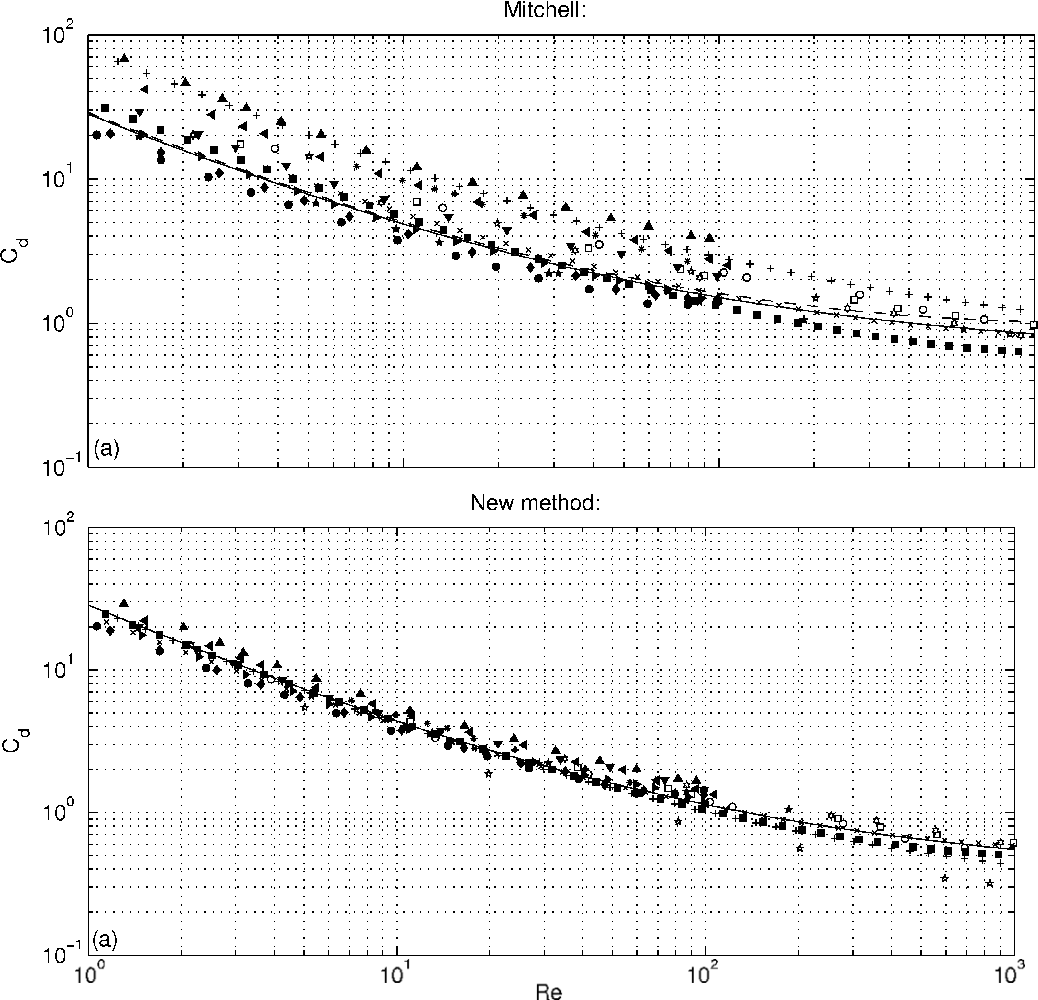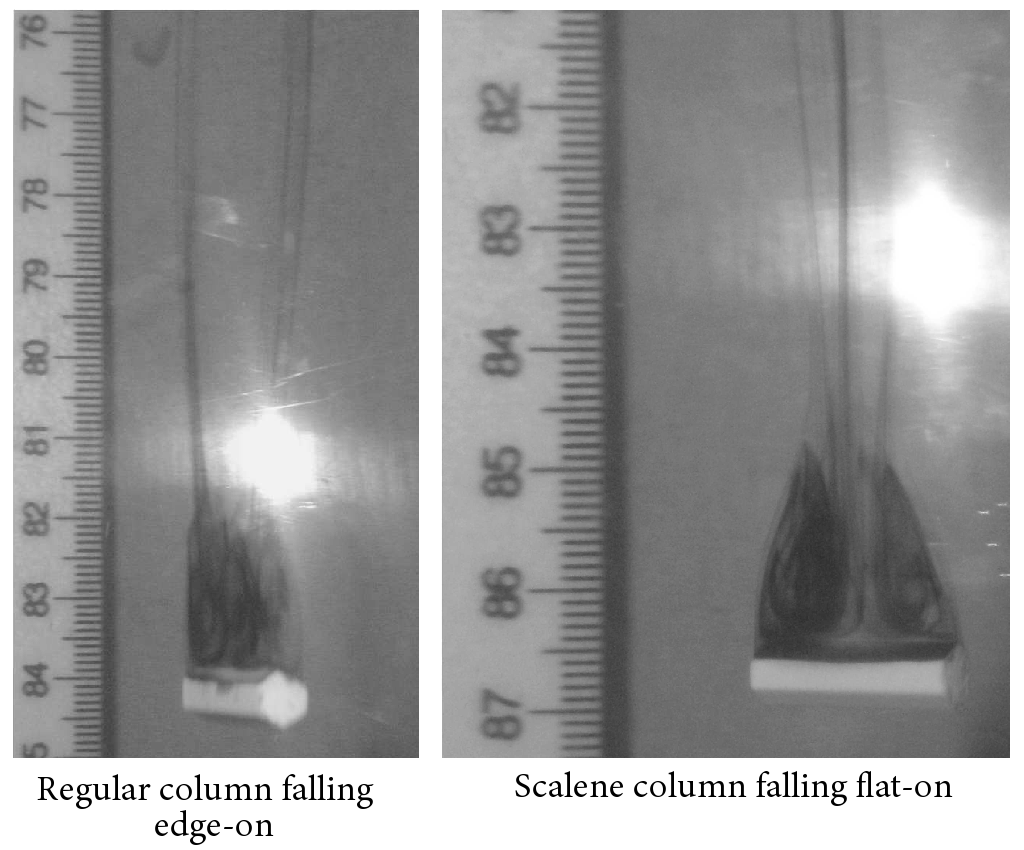
Drag coefficient and fall speed of ice particles
A number of modelling studies have shown that the simulated properties of ice clouds are rather sensitive to how fast the ice particles within them fall. Current standard practice is to use the approach of Mitchell (1996) which assumes a single drag coefficient - reynolds number (Cd-Re) curve can be applied to all ice particle shapes. We have tested this assumption against laboratory tank data and field observations of ice particles. We find good agreement where the area ratio of the particle is close to 1, but for more open particles (dendrites, needles, open rosettes) the Mitchell approach overestimates the terminal velocity by up to a factor of 2. We have developed a simple way of accounting for this variation of Cd-Re with area ratio based on the tank data, and this appears to correct the problem. This is important in models where we want to link the particle weight, size and shape directly to it's terminal velocity. See our paper in JAS for more details. New experiments with idealised aggregate and polycrystalline geometries are underway at present to test the general validity of the new method.

Origin of the Parry arc
It has long been assumed that the rare Parry arc is produced by hexagonal column crystals which orient themselves in free fall such that a pair of prism faces are horizontal (falling 'flat-on', or 'Parry oriented'). However, simple experiments with hexagonal models falling steadily in a tank of water show that this is not in fact the preferred orientation: actually regular hexagonal columns in a still fluid preferentially orient with a pair of prism faces vertical ('edge-on'). However, if the hexagonal column is made scalene in its cross-section (ie equal angles, but not all sides of the hexagon are the same length), the Parry orientation can readily be achieved in certain cases. This suggests that scalene crystal growth is key to the formation of the Parry arc and associated optical effects, and this conclusion is supported by scrutiny of the crystal shapes sampled during Parry arc events by Tape and others. Two pairs of almond-shaped standing eddies are formed on the upper side of the column (see photos below). For more info, see this paper.

Specular reflection from planar ice crystals
Observations using a vertically pointing 1.5 micron Doppler lidar, and slightly off zenith 905nm ceilometer have allowed us to identify specularly reflecting planar ice crystals falling with their major axes aligned in the horizontal using the ratio of the two backscatters. Normally the backscatter is smaller at 1.5 due to increased absorption by ice. However, when oriented planar ice crystals are present the reverse is true (because of the anomalous return close to zenith). These crystals are found to be ubiquitous in mid-level mixed-phase and warm frontal clouds, and occur in around 45% of ice cloud at -15C. This is important for CALIPSO/EarthCARE retrievals where the inferred optical depth/microphysical properties will be unreliable in these cloud types, unless the lidar is pointed a few degrees off nadir. See our paper in QJ.